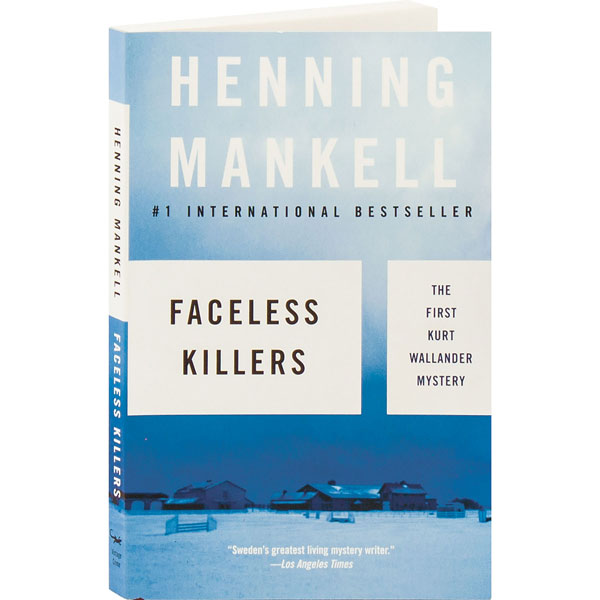


Despite the barren and silent Swedish autumn and winter, despite moments when Wallander does something “unforgivable and dangerous,” despite moments when he thinks, “Somewhere in the dark a vast meaninglessness was beckoning.

How was he going to learn to live in the new?” For "We're living in the age of the noose," a new age of senseless violence and fear. As a policeman, he still lived in another, older world. At one point Wallander thinks, “A new world had emerged, and he hadn’t even noticed it. Like an American movie." And through Wallander's point of view Mankell captures the dramatic and unsettling changes going on in Sweden in the 1990s: disorganized multi-ethnic refugee camps, organized nationalist neo-Nazis groups, increased drug and violent gang activity in previously quiet rural areas, and so on. Small touches in the novel hold up an interesting mirror to America, as when a policeman says about a "slaughterhouse" of a crime scene, "It was worse than you could imagine. And it feels interesting and fresh enough, perhaps partly because it takes place in Sweden, land of exotic names, bitter winters, and police who don't carry guns. Mankell efficiently and compellingly fulfills the mystery-police-procedural genre requirements: brutal murders, red herrings, dead ends, epiphanies, media leaks, social problems, ineffectual government officials, unpredictable action scenes, believable supporting characters, and a flawed but good protagonist. For the rest of the novel, Wallander wrestles with (or ignores or exacerbates) his personal problems as he marshals his policeman techniques, colleagues, and instincts to try to solve the brutal mystery. The only thing that gives him pleasure (albeit mixed with melancholy) is listening to opera. His wife left him three months ago, his once suicidal daughter is now estranged, his demanding and resentful father is going senile, he's visited by a black woman in lonely erotic dreams, he is overweight, and he is not pretty when he drinks. Who could do something like that? And why? And why did the attackers feed couple's horse before vacating the scene of the crime? And can veteran detective Kurt Wallander apprehend the criminals? At forty-two, Wallander is not in great shape. Faceless Killers (1991), Henning Mankell's first Kurt Wallander detective/police novel, opens with an aged Swedish farmer waking up in the middle of the night on Janutrying to dismiss his feeling that something dreadful has just happened: “After all, what could happen here? In the little town of Lenarp, just north of Kade Lake, on the way to beautiful Krageholm Lake, right in the heart of Skane? Nothing ever happens here." He knows that "People like us don't have any enemies." Alas, as he soon learns, his neighbors have just been savagely attacked, the husband bashed and cut to death and the wife beaten and noosed.


 0 kommentar(er)
0 kommentar(er)
